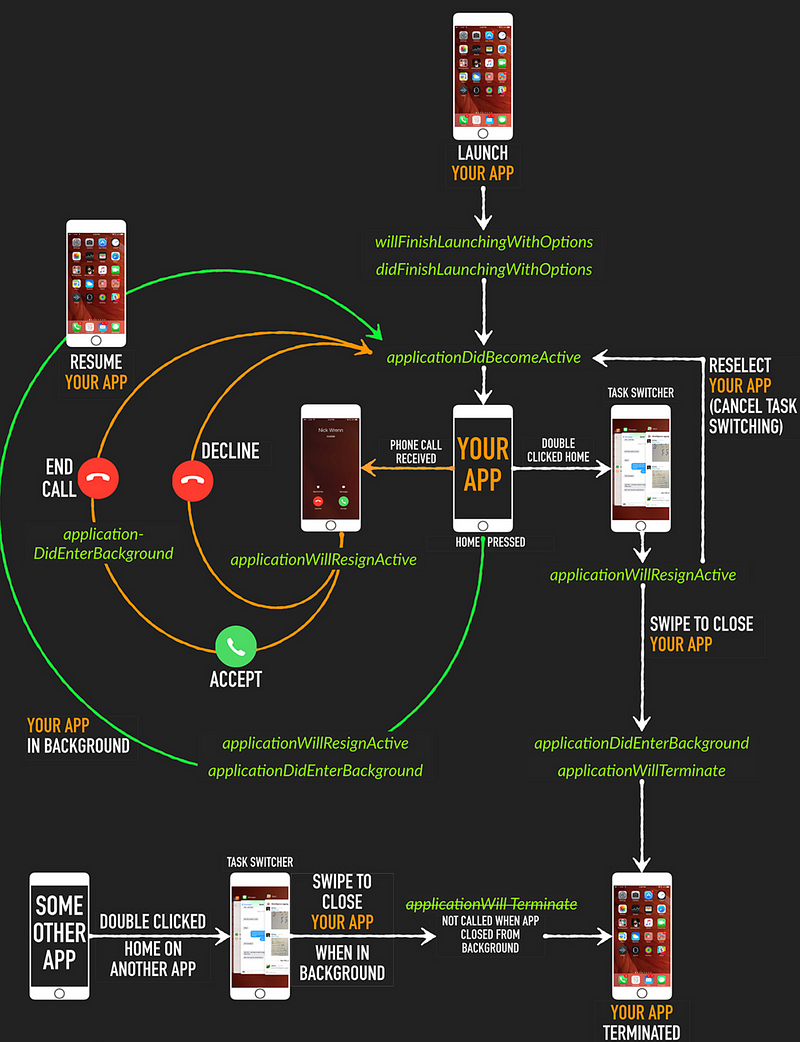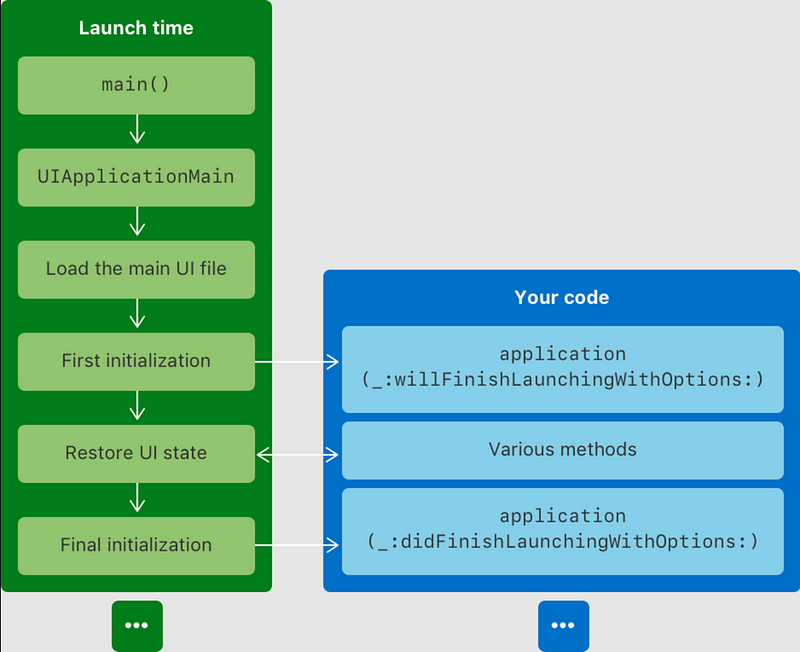Understanding the iOS Application Lifecycle: A Comprehensive Guide
Written on
Chapter 1: Introduction to the Application Lifecycle
Recently, while mentoring new developers and interviewing interns, I recognized the necessity to elaborate on the fundamentals of the iOS Application Lifecycle, including key components like AppDelegate, app states (UIApplication.State), UIViewController, and UIView. Understanding these elements and their interactions is crucial, especially for those new to mobile development.
Often, I observe that the foundational structure of applications is flawed. This oversight may not become evident until new features are integrated, potentially leading to application failures or unwanted side effects. Such issues frequently stem from following basic online tutorials without considering whether the provided solutions fit our specific use case, leading to a simple "copy-paste" approach.
At the conclusion of this series, I will highlight real-world scenarios I've encountered along with their respective solutions. If you're maintaining an existing project, there's a strong likelihood that you need to support iOS 12 or earlier. Thus, let's first examine AppDelegate without the SceneDelegate.

Chapter 2: The App Launch Sequence
When a user or the operating system initiates the app, the following sequence occurs:
- The operating system executes the main() function.
- This function invokes UIApplicationMain(_:_:_:_:), instantiating UIApplication and your app delegate, akin to a singleton representing your app.
- If specified, UIKit loads the default storyboard from your app's Info.plist file (this step is skipped for apps without a default storyboard).
- UIKit calls the application(_:willFinishLaunchingWithOptions:) method in the app delegate.
- State Restoration takes place, triggering additional methods in the app delegate and the app's view controllers.
- Finally, UIKit invokes the application(_:didFinishLaunchingWithOptions:) method of your app delegate.
Upon completing the launch sequence, the system utilizes the app or scene delegate to display the user interface and manage the app's lifecycle.
“In iOS 15 and later, the system may prewarm your app to minimize user wait times.” — Apple

Chapter 3: Use Cases and Solutions
Use Case: If your app employs Silent Push Notifications and initializes the first screen within application(_:didFinishLaunchingWithOptions:), that screen will be activated each time a Silent Push Notification is received. Although the screen itself won’t be visible, its lifecycle methods will still execute. This scenario might not always pose an issue; however, if you utilize analytics, this could skew the perceived number of active user screen views.
Solution: To mitigate this, consider initializing the first screen within applicationDidBecomeActive(_:) or implement a temporary screen (e.g., a pre-loader) that merely manages routing with minimal logic.
Outro
Avoid making assumptions regarding the availability of services and resources at startup. Numerous frameworks have encountered issues with iOS 15 due to this oversight and may require significant revisions.
Now that we have a high-level understanding of the application lifecycle, the subsequent section will delve deeper into the AppDelegate and its methods. Thank you for reading! If you found this content valuable, please like, share, and follow—it means a lot to me. Feel free to leave any suggestions or questions in the comments.